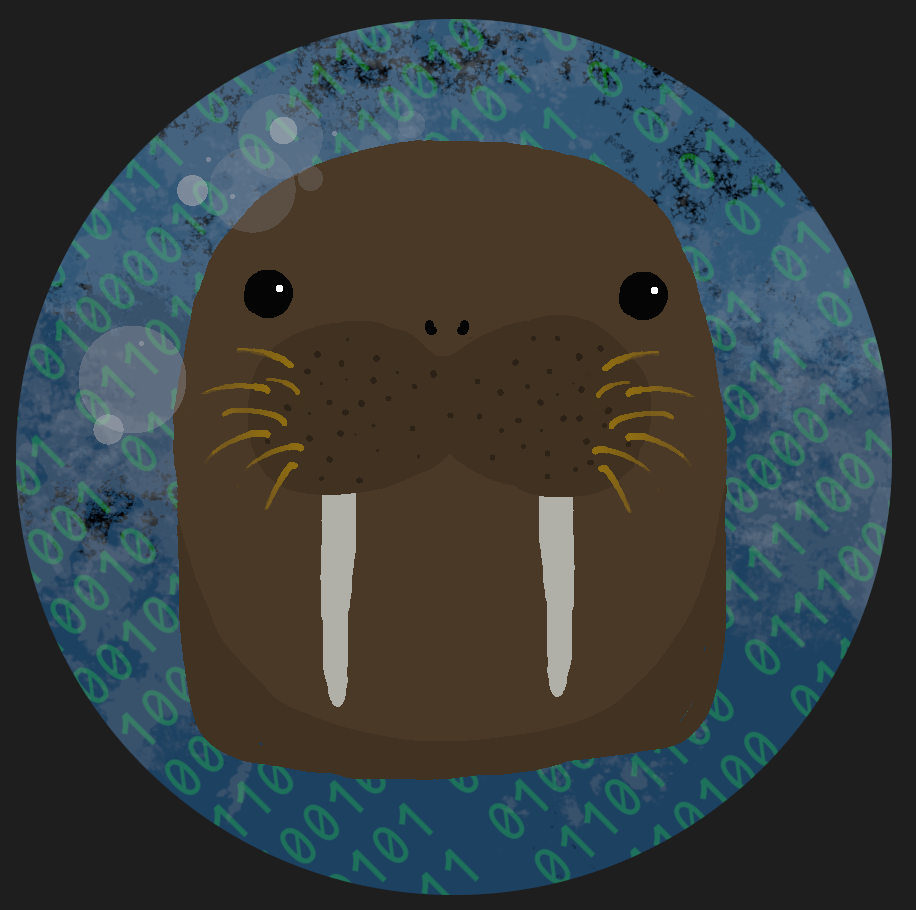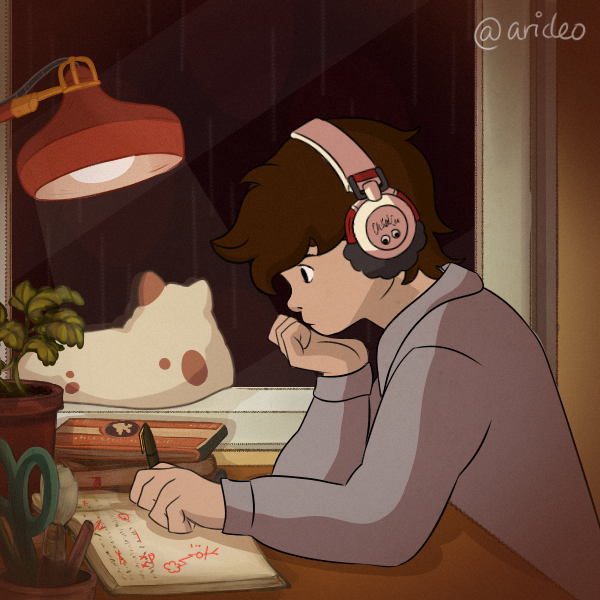Personally, I’m looking forward to native Wayland support for Wine and KDE’s port to Qt 6.
A fully working Linux Phone with good battery life that supports a good matrix client with e2 encryption. GrapheneOS is good, but we need initiatives independent from Google.
Technically Android is Linux. I know what you mean though, and it would be great. Maybe some day…
deleted by creator
HDR and wide color gamut! While the displays are still only really available in the mid to high end (I don’t count HDR400), it’s no longer just pro gear and I upgraded to a new display recently that I’d love to take advantage of it with. I’ve been using the new, still in testing Variable Refresh Rate on GNOME and this would be the final piece of the puzzle for making me ditch windows 100% when it comes to gaming, as Proton has basically solved every other issue for me - I’m primarily a singleplayer gamer.
I think KDE and Gamescope have experimental HDR working with Windows games.
I don’t know if KDE got it working yet, but Gamescope’s works pretty well out-of-the-box. Nobara and maybe Chimara OS already have this ready with a session for Steam Big Picture mode.
Kinda funny that Windows games seem to always get compatibility with these things first. I guess just adding support in Wine means more games get the functionality at once than developers adding it on a per-game basis.
Linux phones are getting closer and closer to usability every day. I don’t care that they’ll always be less polished than iOS or Android, I want a Linux phone.
I’ve been curious about Linux phones. Can you recommended any devices or operating systems to watch? Thanks.
Your best bet right now IMO would be flashing PostmarketOS onto a used OnePlus 6, which is cheap, has good specs and none of the battery issues plaguing the Pinephone Pro. That said, it’s not 100% ready to be a phone yet- for now its best use case is as a mini-tablet / PDA kind of thing. Really feels like carrying a pocket laptop around, which is pretty fun as a starting point.
Cool, thank you!
Pinephone has a great active community, and the device itself is dirt cheap (also pretty low-specced). There’s a pro version with a much better specs in theory, but development state is much rougher. Not that the basic model is anywhere near daily driver material yet, but the progress is very appreciable every time i check in.
Linux phones
Will we be able to use messaging apps such as WhatsApp and Signal on Linux phones?
Yes, since you can run Android apps on them. They will be slower and have some quirks though I’m sure.
I am looking forward to Wayland being a problem free experience. Well, rather, I don’t care if it’s X11 or Wayland, I don’t want have to think about the underlying system.
Also, software becoming distributable in a uniform way. Though here, I strongly would advocate for flatpak.
RiscV laptops and precompiled binaries in package managers.
RISCV laptops, with battery that can handle 3 days of juice, doing work. And should be powered by linux, either Fedora or it’s derivative (imho)
My dream is to have a RISC-V phone running Linux
whats all of this for?
Two things at completely opposite ends of the “Linux world”:
-
eBPF. It seems super promising for improving observability and security; especially performance of these concerns. It also strikes me as a risky architectural decision. Programmable privileged kernel code + JIT. What could go wrong… that validator sure is doing heavy lifting.
-
Valve flexing more muscle in developing Proton as it comes to terms with the fact Microsoft’s vertical integration (and monopolistic practices increasingly unfettered by government) will eventually be an existential risk to it. It is now ridiculously easy to install and run so many games on Linux, so long as you accept the devil you know and it’s DRMy platform. Definitely not perfect but it’s so vastly improved I’m comfortable calling it “night and day”
The Valve one has been the most exciting for me. AFAIK Valve has been thinking about the issues with Windows controlling PC gaming since Windows 8 first came out. The Steam Machines were a flop at the time but in recent years they’ve been able to maks big moves for Linux gaming and instead of giving up has been doubling down on the importance of it.
Ahh yes the Steam Machines. Definitely contemporaneous with windows 8.
I think it’s likely Valve have intensified efforts recently for a number of reasons but not least of which is the ongoing encroachment of Microsoft turning the Windows PC experience into more of a walled garden across more segments. It can’t have gone unnoticed that Microsoft are 1) selling games on the Microsoft Store and 2) are normalising the concept of hardware root of trust etc with the windows 11 TPM requirement.
EFI secure boot was one thing. Setting conditions up so every PC in the world has hardware support for verifying that user space programs are signed by Microsoft is another. I’m not saying overnight they’ll flick a switch and every windows installation in the world is on S mode. But it’s clearly trending that way. That would be good night for Steam if they so chose. And clearly Microsoft believe they can fob off regulators well enough
-
Wine + Wayland for sure. It’s time to let X11 rest, it’s earned it.
Its all finished, the main developer is porting the source code by patches so its easier for the MR to get accepted by the Wine devs.
What do you mean? I play games with Lutris on Wayland without issues.
It goes through XWayland, whereas Wine on Wayland would do away with that later
The ever-improving ecosystem for NixOS as a desktop environment.
I switched over to Nix around a month ago, and in that time I’ve already seen several guides and sources of documentation improve themselves significantly. I could see NixOS documentation eventually becoming almost as impressive as the Arch Wiki, and it seems that process is in hyperdrive right now.
deleted by creator
X12
Linux phones for me. Really impressed by how these things have come in the last 3-4 years, and now we’re getting close to having at least one that’s usable day-to-day (with plenty of rough edges, obviously). As soon as that happens I hope more people will decide to take the plunge and really start pushing things forward.
I’m just disappointed in the direction of UX they’re all taking. Ubuntu Touch was looking innovative and made me excited. Then that didn’t happen and now we just have a bunch of Android look-alikes but worse and buggier. Don’t get me wrong, I’m very glad to have GNU/Linux on a phone either way (especially NixOS Mobile), but I’m not excited to use one.
I don’t know if it’s just me getting older or if innovation in how we interface with technology has just sort of stagnated. In the past there was so much happening. New input methods (all kinds of pointer devices, joysticks, weird keyboards); graphical paradigms (floating windows vs tiling panes, tabs, stacking, grouping, virtual desktops); display technologies (vector graphics, convex screens, flat screens, projectors, VR headsets, e-ink); even machine architectures (eg Lisp machines) and how you interacted with your computer environment as a result.
As far as I can tell, VR systems are the latest innovation and they haven’t changed significantly in close to a decade. E-ink displays are almost nowhere to be found, or only attached to shitty devices (thanks, patent laws) - although I’m excited for the PineNote to eventually happen.
How do we still not have radial menus?! Or visual graph-like pipelining for composing input-outputs between bespoke programs?! We’ve all settled on a very homogenous way of interacting with computers, and I don’t believe for a second that it’s the best way.
Just want to add that I don’t think it’s a technological plateau. I think it’s capitalism producing shiny and “upgraded” versions of things that are easy to sell. Things that enable accessible and rapid consumption. High refresh rate, vertical high-resolution screens for endless scrolling in apps optimised for ads-scrolled-past-per-second. E-ink devices only good enough that you can clearly see the ads on them as you read your books. Things are just not made for humans. They’re made for corporations to extract value out of humans.
Having used Ubuntu touch for a bit I’m way more excited about gnome mobile. I just think it’s overall a better paradigm. Ubuntu had some neat ideas but overall it just didn’t do it for me.
Yeah, the desktops are A++ for the last 10 years, it’s the phones that I’m excited to get to a similar level. I have one and it’s an expensive dust collector, I dust it off every few months and not much is changing
Oh yea, I’m very excited to give Plasma Mobile a go in earnest
Plasma’s scalable applications paradigm has been around for coming up on 15 years. Gnome’s isn’t far behind.
A WINE type app but for OSX (or really just iOS) apps would be awesome to have both desktops and phone. Call it CIDER or something similar. I reckon the way Apple does their app stores these days it would be hard to actually get most software working, but I don’t think that alone is a showstopper.
Having both that and Waydroid on a phone would be pretty great. You might want to check out Darling for running Mac apps on Linux in the meantime, since its goals are similar to Wine’s (but it’s still early in development in comparison)
IPFS has a ton of potential behind it, as it makes publishing, accessing and retaining content drastically easier than HTTP. The content-addressing also means you can basically sidesteps the whole act of “downloading”, no more need to download a file, extract a file, etc. You just access it directly in your file system by a unique name.
That said, I am also very pessimistic on it. IPFS suffer from “underspecification”. The protocol is completely focused on just moving bytes around. It doesn’t care about copyright or authorship, which becomes a huge problem due to content no longer having a real home in IPFS, everybody can pin, cache or share content on IPFS. It’s very much like Bittorrent in this regard, but worse as even Open Source licenses don’t help here. IPFS, unlike Bittorrent, doesn’t even guarantee that content will stay together, e.g. you can pin and reshare your favorite icon, without a hint of what license it is under or what icon theme you picked it from. For the time being everybody seems to just ignore the problem, but I think it will kill it if it gets popular before this problem is solved.
Another problem is that it’s just buggy and slow, especially when it comes to the fuse daemon that provides the /ipfs and /ipns directories. Though that at least is fixable on the client side. The copyright problem might not without some fundamental changes to the protocol itself.
It doesn’t care about copyright or authorship, which becomes a huge problem due to content no longer having a real home in IPFS, everybody can pin, cache or share content on IPFS.
Sounds like a feature, not a shortcoming
It means that using it properly is automatically illegal. I am not seeing how that’s a “feature”. It renders it completely unusable.
No it doesn’t. Maybe in some places? But not in most. You can break copyright laws with pen and paper, which don’t have any protection against it and are perfectly legal
With IPFS every single website you look at becomes cached by your node and redistricted by your node, that’s the whole point of it. Redistribution is illegal by default, unless explicitly allowed or public domain. The problem is even if it is allowed, say Open Source software, that often comes with conditions such as “you must include the license when you redistribute it”. With IPFS even that doesn’t work, as each file or even subsections of a file will get redistributed independently, so if the license is in another file than the one you are redistributing, you are in violation of that license. With Bittorrent in contrast you redistributed whole directories at once, so that’s fine.
Unless you want to use IPFS exclusively with only 90+ year old works with expired copyright, I just don’t see it working. At the moment nobody really cares, since it is small enough, but that can quickly change.
ISPs and sites like Youtube have exceptions that allow them to redistribute illegal stuff, if they remove it when they are notified. No such exception exists for regular users and I’ll doubt that we’ll ever get one, as with IPFS there is no origin of a piece of content that you can shift the blame to.
I think that would go against the philosophy of ipfs. Sticking drm on top of it would crash with the intended self-archiving capabilities and censorship resistance, as well as with the whole point of a decentralized network since some entity or entities would have the power to block or delete content from it
I’m looking forward to XFCE/Wayland.
I started Linux 2 years ago, and learned a lot, but never bothered learning about X11 because I figured it would be a waste of time.
Me too. I love XFCE so much, but it’s impossible to deny how large a step forwards Wayland is on a technical level (although there are still kinks to work out). When XFCE moves over, I’ll be able to confidently do so as well.
pop os new de
If you’re not familiar with Linux and distros, this reads like a foreign language lol
Pop_OS!, a popular Linux distribution, is writing a new desktop environment. A desktop environment is basically the functionality of the desktop, think the taskbar and window snapping, etc. on Windows and the dock and top bar on macOS. A desktop environment also comes with its own set of apps, like how Windows comes with Explorer and Task Manager.
Yea, Cosmo Desktop sounds really cool.
XFCE Wayland would be pretty sweet. Also native night mode whenever they add that.













